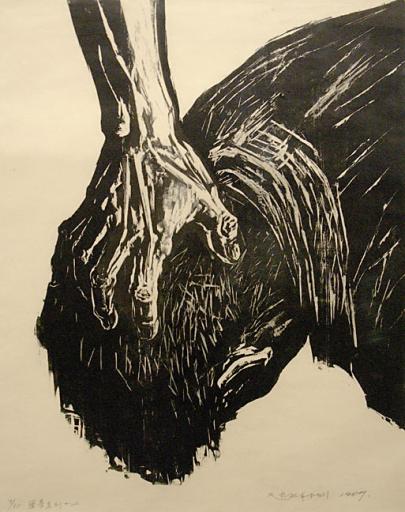Nightmare #2, 1989, Zhao Yannian
Artwork Overview
Zhao Yannian, artist
1924–2014
Nightmare #2, 1989,
1989
Portfolio/Series title: Nightmare Series
Where object was made: China
Material/technique: woodcut
Dimensions:
Sheet/Paper Dimensions (Height x Width): 693 x 548 mm
Image Dimensions Height/Width (Height x Width): 668 x 533 mm
Image Dimensions Height/Width (Height x Width): 26 5/16 x 21 in
Sheet/Paper Dimensions (Height x Width): 27 5/16 x 21 9/16 in
Mat Dimensions (Height x Width): 36 x 30 in
Sheet/Paper Dimensions (Height x Width): 693 x 548 mm
Image Dimensions Height/Width (Height x Width): 668 x 533 mm
Image Dimensions Height/Width (Height x Width): 26 5/16 x 21 in
Sheet/Paper Dimensions (Height x Width): 27 5/16 x 21 9/16 in
Mat Dimensions (Height x Width): 36 x 30 in
Credit line: Museum purchase: R. Charles and Mary Margaret Clevenger Fund
Accession number: 2001.0081
Not on display
If you wish to reproduce this image, please submit an image request





